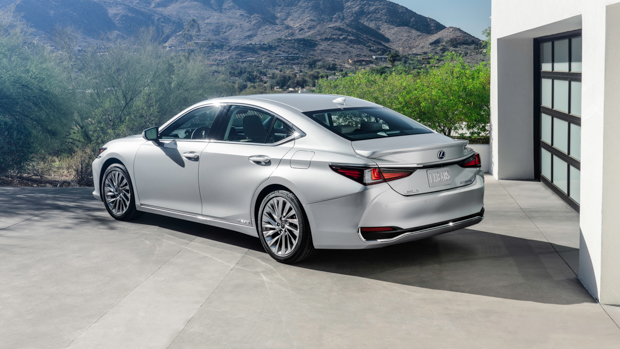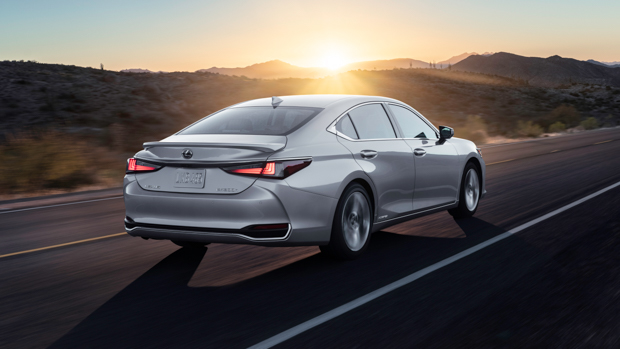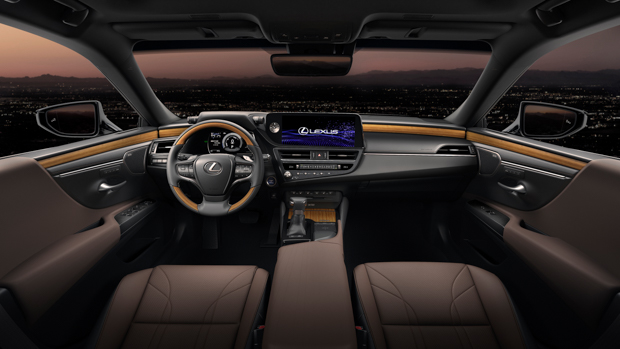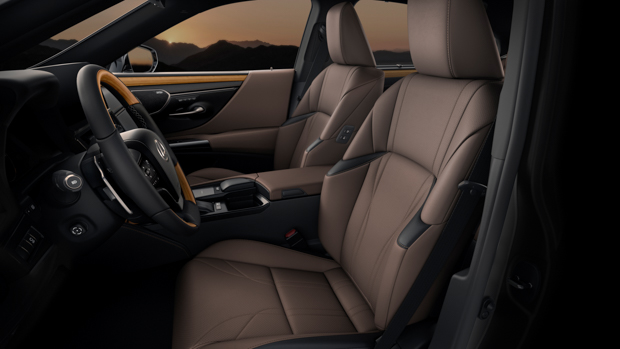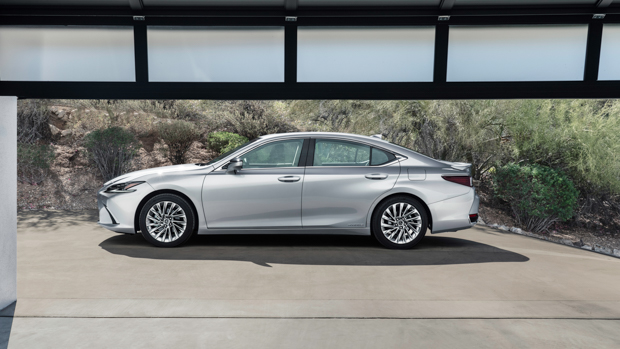-
Car Reviews
- Car News
-
Car Comparisons
Latest comparisons
- Chasing Deals
After releasing the seventh generation of the ES in 2018, Lexus has given the midsize sedan its first significant facelift that makes a slew of subtle changes to increase the everyday usability.
Lexus has unveiled the facelifted version of the 2021 ES midsize sedan which will bring a host of improvements to safety, performance and ride comfort when it arrives in Australia in the second half of this year.
The ES has been given a slightly more serious appearance with square bezels inlaid in the headlights that includes an adaptive high beam system in some grades.
Lexus has largely left the rest of the exterior alone, save for the 17 and 18-inch wheels adopting an ‘L-shaped’ design, with the ES300h F Sport adopting a larger 19-inch gloss black version.
Proving this facelift is more than just skin deep, Lexus has gone right down to the bones of the ES and strengthened the rear suspension braces by switching from a single-sheet structure to a stronger dual-sheet structure.
Lexus says this change has enhanced torsional rigidity which should go some way to not only improve driving dynamics but also provide a more comfortable and predictable experience.
Buyers who opt for the keener ES300h F Sport grades will benefit from the revised adaptive variable suspension which can now accommodate a wider range of damping forces.
In pursuit of a more predictable driving experience, Lexus has also revised the brake connection to work seamlessly with the regenerative feel from the 2.5-litre four-cylinder hybrid engine, which uses a CVT transmission to send power to the front wheels.
While local specification for the drivetrain is yet to be confirmed, the pre-facelifted ES develops up to 160kW of power – and while a combined torque figure is not stated, the petrol engine alone produces at least 221Nm of torque and uses just 4.8L/100km to get around.
Climb inside the ES and you’ll find some key changes to the interior to make it more intuitive to use, starting with the 12.3-inch touchscreen which has been brought forward 100mm and rotated five degrees to make it easier to reach.
Lexus now offers a walnut material in the ES that is inlaid in the steering wheels, door cards and dash that contrasts the other dark-coloured soft-touch materials in the cabin.
Echoing the flagship new LS large sedan, the ES is now available with a hazel upholstery while the ES300h F Sport diversifies itself from the base Luxury and Sports Luxury grades with a trim using a combination of white and Flare Red colours.
As with the latest generation Toyota Camry of which it shares its underpinnings, the Lexus ES has received a notable step up in safety.
The automatic emergency braking system now has the ability to detect both pedestrians and cyclists in low-light conditions along with rouge cars when entering an intersection.
Lane tracing assist and the overall adaptive cruise control system has been improved to provide smoother and more accurate steering inputs.
Lexus has also outfitted the ES with its Low-Speed Acceleration Control system that detects accidental throttle inputs and cancels them out before they become a problem.
While official pricing will be confirmed closer to the launch date, the listed price of the ES should rise slightly from the current $62,525- $77,000 (before on-roads) range.
Latest news
About Chasing cars
Chasing Cars reviews are 100% independent.
Because we are powered by Budget Direct Insurance, we don’t receive advertising or sales revenue from car manufacturers.
We’re truly independent – giving you Australia’s best car reviews.
